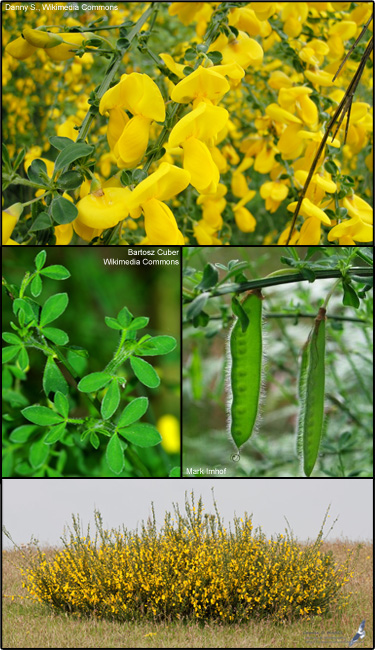Scotch broom (Cytisus scoparius)
 Common Names: Portuguese broom, English broom,
scotchbroom, striated broom
Common Names: Portuguese broom, English broom,
scotchbroom, striated broom Description: Highly toxic and could be fatal if eaten.
Habit: 4-6 ft. deciduous shrub, rounded to irregular, twiggy.
Leaves: Deciduous, alternate; small, trifoliate leaves; upper leaves often with 1 leaflet, medium to bright green in color.
Stems: Green turning gray-brown with age, broom-like, conspicuous, angled and flexible.
Flowers: Pea-like, yellow in color, 1 in., profuse and very showy.
Fruit and seeds: 1.5-2 in' pea-like pods.
Habitat: Native to central and southern Europe. Can be found in coastal beaches or dunes, pastures, yards and gardens, roadsides, disturbed sites and dry scrubland.
Reproduction: By seed and sometimes vegetatively by resprouting.
Monitoring and rapid response: Difficult to control because of its long-lived seed bank. Can be controlled by biological control, uprooting, cutting, controlled burns, competitive planting and spot treatments with herbicides as a last resort. Credits: The information provided in this factsheet was gathered from NC State University, University of Connecticut, Invasive Plant Atlas of New England and the U.S. Department of Agriculture, Forest Service FEIS:CYTSPP.
Individual species images that appear with a number in a black box are courtesy of the Bugwood.org network (http://www.invasive.org). Individual photo author credits may not be included due to the small display size of the images and subsequent difficulty of reading the provided text. All other images appear courtesy of Google (http://images.google.com).
